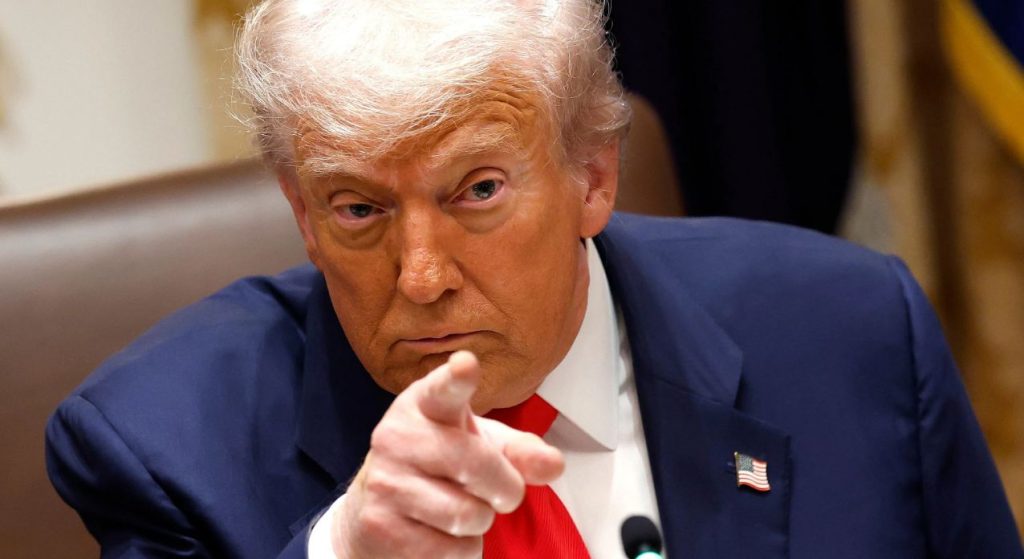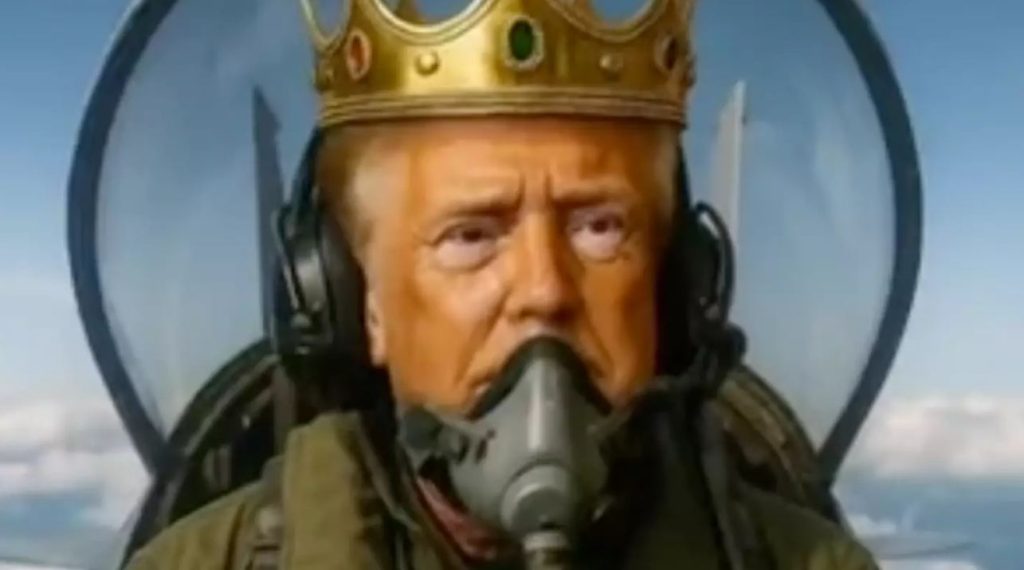In response to widespread nationwide demonstrations under the banner of “No Kings,” the President of the United States shared an artificially generated video in which he appears wearing a crown, piloting a fighter jet marked King Trump, and dumping a stream of brown sludge over protesters. The clip, set to the tune of “Danger Zone,” conjures a surreal blend of theatrical monarchy and aerial spectacle within an American political context.
The Protests and Their Scale
The “No Kings” protests unfolded across thousands of locations nationwide, spanning cities from New York and Washington D.C. to Los Angeles and smaller towns alike. Organisers estimated that upwards of six to seven million people took part in the demonstrations in what is being described as one of the largest single-day nationwide protests in U.S. history. Participants carried signs such as “Democracy Not Monarchy” and deployed creative costumes and imagery to convey a message of resistance.

Symbolism and Messaging
At the heart of the protests lies a narrative: that the administration in power has strayed into authoritarian territory. The slogan “No Kings” picks up on that theme directly—rejecting the idea of a ruler above democratic checks and embracing the principle of popular sovereignty. The videos shared by the President play directly into these themes by appropriating monarchical visual cues: the crown, the jet labelled “King Trump,” the airborne release of sludge over demonstrators. The complex interplay of gesture, symbolism and satire raises questions about how political communication is evolving in the era of artificial intelligence and viral media.
Public and Political Reaction
The response has been swift and varied. Many protesters regarded the video as childish and offensive, a crude spectacle that mocks the right to peaceful dissent. Others viewed it as a chilling demonstration of how digital culture and politics now intersect: high-budget, stylised, provocative content engineered for virality rather than reasoned debate. Some opposition politicians condemned the clip as undermining democratic norms and deepening division, while members of the administration dismissed the protests as fringe or hostile to American values. A poll conducted just ahead of the demonstrations found that a majority of Americans believe the President aspires to behave like a king, though an overwhelming number said he should not.

The Broader Implications
This episode raises several questions about the state of civic engagement, political symbolism and media ethics. First, what does it mean when mass protest movements are answered not with policy responses or dialogue but with digitally engineered spectacle? Second, how does the use of AI-generated media affect the boundaries between satire, propaganda and legitimate public communication? Third, for a democracy that emphasises accountability and peaceful protest, what is the significance of a leader deploying imagery of overfly and sewage-drop against citizens exercising free speech?
What’s Next
Looking ahead, the political climate appears likely to remain charged. Given the scale of the protests and the administration’s use of provocative digital content, further tension between grassroots mobilisation and official messaging seems inevitable. Protest organisers have announced more events and signalled that their goal is not merely to register dissent, but to influence institutions and policy. At the same time, the directorial use of AI media by senior figures may herald a new era of political communication—where spectacle and symbolic warfare supplement, or even replace, traditional political discourse.

















